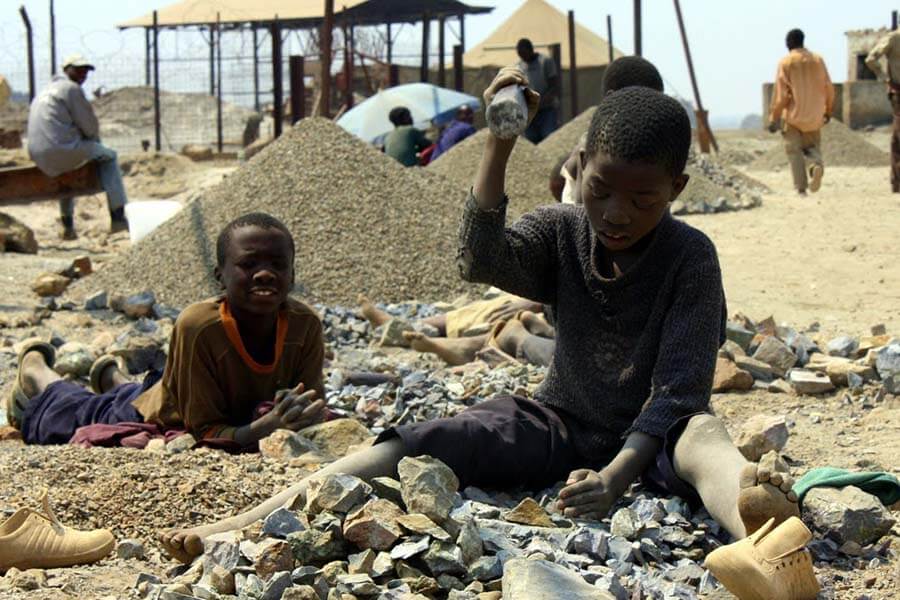A relatively rare metal, cobalt is a crucial component of the rechargeable lithium-ion batteries used in smartphones, electric vehicles, and a whole host of electronics. Most of the world’s cobalt supply comes from the Democratic Republic of the Congo (DRC) where the practice of using child labor to mine the metal runs rampant. With the continued push toward responsible and ethical sourcing, companies are looking at ways to ensure that the cobalt they purchase is not the product of child labor. Blockchain technology may provide the answer.
The Democratic Republic of the Congo (DRC) is a hotbed of corruption, political unrest, and violence. As a result, despite the country’s abundant natural resources, extreme poverty is the norm for much of the country’s 84 million people. It is perhaps ironic, then, that an estimated 65% of the world’s cobalt supply comes from the world’s poorest country.
Out of all of the cobalt mined in the DRC, roughly 20% of it is “artisinally mined” – a more palatable way of saying that it is mined by hand – and much of that mining is done by children. In fact, the latest research by UNICEF estimates that there are as many as 40,000 children – some as young as 7 years old – mining cobalt in the country.
Companies like Apple, Tesla, Volkswagen, and others are looking for ways to ensure that the cobalt they purchase is ethically sourced and not produced using child labor. One of the avenues being explored to help ensure the integrity of the cobalt supply chain, according to Fortune magazine, is blockchain technology.
Using Blockchain to Keep Child Labor Out of the Cobalt Supply Chain
London-based human rights NGO Amnesty International has been looking at blockchain as a way to make sure that mined cobalt in the region remains “clean” – that it hasn’t been the product of child labor.
A pilot program, proposed in February of this year, would involve vetting miners and providing them with a digital tag. Each bag of cobalt produced by the miner would then be sealed, tagged, and entered on the blockchain via a mobile device along with details such as weight, date, time, the miner’s name, and even photos.
From there, each step in the supply chain would involve each person taking custody of the bag recording additional information on the blockchain. The end result is an immutable record of every step that bag of cobalt took, from mine to smelter, that buyers or any other third party can view.
Speaking about the potential of the technology, Harrison Mitchell, director of RCS Global, a London-based supply chain auditor and responsible sourcing advocate, said:
We are very bullish about the potential impact of blockchain in minerals and metals supply chains.
He further added:
Blockchain-enabled supply chains will have the ability to deliver trust and transparency over the production of metals such as cobalt. […] Ensuring that information from these mine sites is inputted correctly and transparently is difficult, but it is possible.
Do you think that blockchain technology is the key to keeping child labor out of the cobalt supply chain? What about diamonds and other gem and mineral supply chains? Let us know in the comments below.
Images courtesy of YouTube/UNICEF
